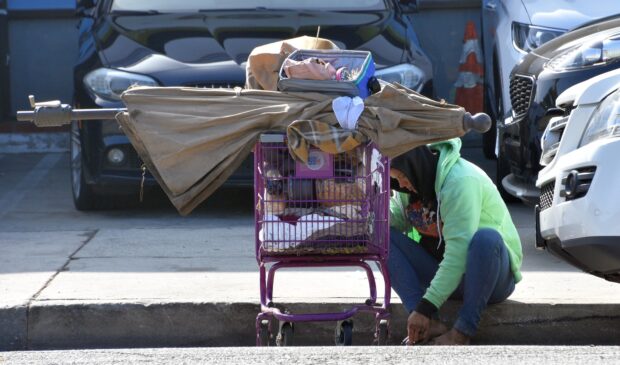
The city is projected to need $35 million annually over a 10-year period to effectively end homelessness via a plan that emphasizes adding hundreds of permanent supportive housing units while also addressing emergency shelter and prevention steps to keep people from losing their homes.
City Council’s Public Health Committee met on Wednesday and received a presentation from the Ending Community Homelessness Coalition (ECHO) on the recently completed modeling and forecasting of the city’s homelessness trends. The 10-year plan is seen as a way to move the city’s high numbers of chronically homeless individuals back into stable housing while efficiently providing aid to stop at-risk residents and families from losing their homes.
The report focuses on expanding housing capacity across emergency shelters, rapid rehousing and permanent supportive housing, with total costs expected to reach around $24.4 million for 550 emergency shelter units, $104.5 million for 2,355 rapid rehousing units and $217.4 million for 4,175 permanent supportive units. The plan proposes an annual, staged investment schedule that anticipates shifts in available funding, such as the expiration of specific federal support from the American Rescue Plan that the city has relied on in recent years.
Kate Moore, vice president of ECHO’s homelessness response system strategy, said the number of chronically homeless people – from 25 percent to 30 percent of those who are in the agency’s management system – is larger than peer cities and other major cities in Texas. Moore said part of that anomaly comes from the city not adding permanent supporting housing units commensurate with its sharp population growth.
“We’re already seeing an increase in people moving into (new) permanent supportive housing. This will help us address this but we need to keep our eye on this number,” she said. “Despite this large growth in the (Homeless Response) System, we are still playing catch-up. Austin’s inventory of shelter and housing remains the lowest among big cities in Texas and among the lowest among our peer cities.”
Council Member Vanessa Fuentes said she supported the plan, calling the total $350 million cost “a manageable number that we can make if we make the necessary strategic policy proposals.”
The recommended policy steps focus on an “inverted funnel” approach, in which more emphasis is placed on long-term housing and support rather than on simply expanding short-term shelter options. That strategy is intended to reduce the chronic, cyclical nature of homelessness by ensuring that more individuals transition to stable housing rather than relying on temporary solutions.
David Gray, the city’s homeless strategy officer, said his office is looking at what methods other major cities use to fund their homelessness response needs, with corporate giving and philanthropy added to all available sources of public funding.
The city’s next bond package in 2025 or 2026 is expected to include a substantial request for funding for housing and resources related to housing for those experiencing homelessness. Council Member Ryan Alter said the city also has to find approximately $50 million over the next two years to replace the Marshalling Yard emergency shelter and provide the money needed for rapid rehousing services.
With permanent supportive housing projects typically taking four-plus years to develop, Alter said the city needs to start finding ways to continue adding more permanent supportive housing units beyond those that were paid for in part with federal dollars.
“If we came here today with $100 million, $200 million, pick your number … we would have to start that process today to start meeting the need of 2028 and 2029 if we were acting quickly. These projects just take forever,” he said.
Photo made available through a Creative Commons license.
The Austin Monitor’s work is made possible by donations from the community. Though our reporting covers donors from time to time, we are careful to keep business and editorial efforts separate while maintaining transparency. A complete list of donors is available here, and our code of ethics is explained here.
You’re a community leader
And we’re honored you look to us for serious, in-depth news. You know a strong community needs local and dedicated watchdog reporting. We’re here for you and that won’t change. Now will you take the powerful next step and support our nonprofit news organization?




